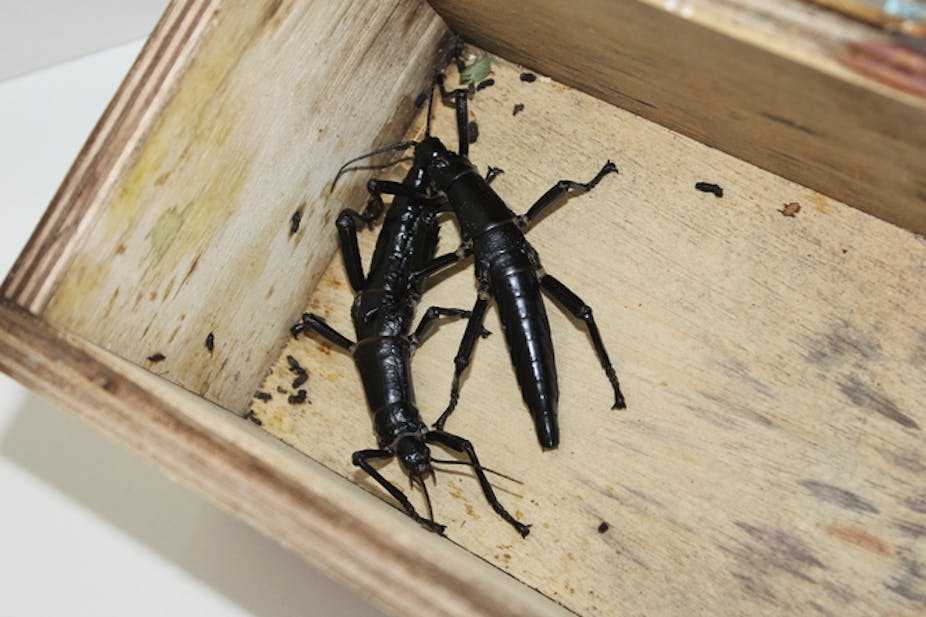If you haven’t heard of the Lord Howe Island stick insect, you have missed out on one of the most remarkable conservation stories of the decade.
This week’s news is that breeding colonies of Australia’s rarest insect will soon be established in zoos at San Diego, Toronto and Bristol. These new colonies will join those at the Melbourne Zoo and the Lord Howe Island Museum to ensure the future of this unique species.
The remarkable story of these stick insects (which are also called phasmids or land lobsters) started when rats escaped from a shipwreck in 1918 and proceeded to eat every last stick insect on Lord Howe Island. The species was thought to be extinct until a few live specimens were discovered on Balls Pyramid in 2001. The news headline in the Sydney Morning Herald at the time proclaimed: “Joy as ancient ‘walking sausage’ found alive.”
This remote and almost inaccessible population was the key to survival for the phasmids, but presented enormous difficulties for scientists who wanted to study them. Eventually an expedition was arranged to collect live specimens, which had to be done at night when the insects are out of their burrows and active.
The story of the captive breeding program is almost heart-stopping with many twists and turns. The original pair held at the Melbourne zoo were named Adam and Eve and because almost nothing was known of their lifestyle and habits, trial and error and careful observation were needed to provide them with appropriate care. At one point Eve nearly died but was revived when zookeeper Patrick Rohan carefully dropped a mixture of sugar, calcium and ground melaleuca leaves into her mouth.
Eve’s first egg hatched on Threatened Species Day on 2003, and although this wasn’t the end of the challenges facing Melbourne Zoo staff, it turned out to be the beginning of hope for the species’ successful captive breeding program.
I became personally acquainted with these insects when the zoo allowed selected schools to hatch some eggs and one of the babies spent time at my house. A film of her first steps and the story of our excitement was published here in 2012.

The Lord Howe stick insects start out small and green but grow up fat and black. They spend their days curled up together in burrows and head out at night to feed. Their story has caught the attention of David Attenborough and Jane Goodall.
New books about Lord Howe Stick Insects
If you want to know all about the story of the Lord Howe Stick Insects, two recent books are ready for you to devour.
For adults, Return of the Phasmid: Australia’s rarest insect fights back from the brink of extinction, by Rick Wilkinson provides a comprehensive and fascinating summary of the history, geology and human drama involved in this story, complete with great photos and personal accounts. Anyone who wants to understand what it takes to bring a species back from the brink will find it great reading.
Additionally and delightfully, the invertebrate zookeeper Rohan Cleave has released a children’s book, Phasmid: Saving the Lord Howe Stick Insect, with lovely watercolour illustrations that bring phasmids to life for young hearts.
Soon these books will become important in a global context, as people in San Diego, Toronto and Bristol get to meet our very own ‘walking sausages’.

